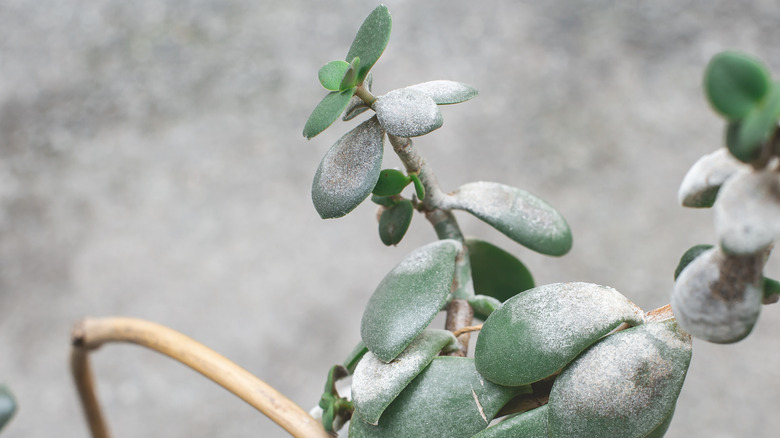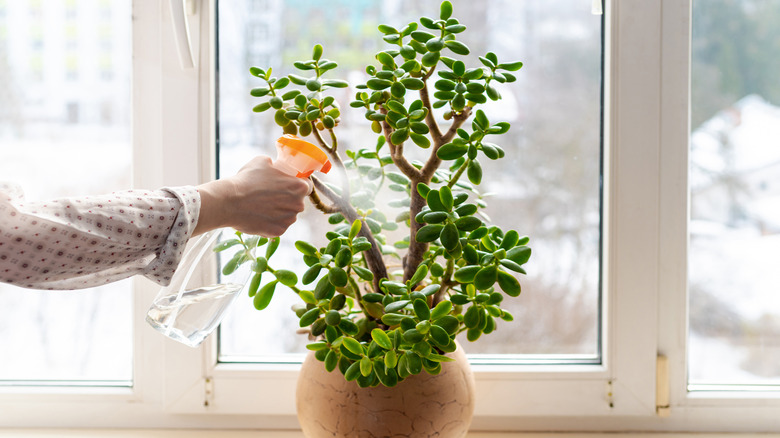Essential Tips For Treating Powdery White Spots On A Jade Plant
We may receive a commission on purchases made from links.
Jade plants (Crassula ovata) are the humble, down-to-earth celebrities of plants: You can spot them at the grocery store, they're affordable, and they're accessible. At the same time, they can be somewhat of a status symbol, with envied longevity, plus supposedly carrying good luck and prosperity as part of the meaning of jade plants. The succulent also offers a bit of versatility with its appearance. It can be trained into a bonsai, grown a bit more freely and shrub-like, or pruned into a tree.
Despite being low-maintenance and withstanding some neglect, jade plants can be susceptible to powdery mildew — evidence of a plant-infesting fungus. At first glance, this grayish-white fuzz may give you the impression that you need to be more vigilant about dusting your leafy friends. But the difference between this disease and standard dust is that powdery mildew first appears in circular shapes before spreading. Powdery mildew can be rubbed off, but unless you take further action, it will simply return. Untreated, the fungus can stunt your plant's growth or cause leaves to turn brown and fall off.
The presence of the fungus is largely related to the jade plant and its environment. A combination of low air flow, insufficient sunlight, and cooler temperatures creates the ideal breeding ground for the flour-like mildew. Spores housed in the mildew spread to other parts of the plant — or to neighboring plants — so immediately isolate the infected plant.
DIY sprays and prevention tips
If you've spotted this unappealing fungus on your jade plant, you have several easy and affordable treatments, including DIY sprays. Horticultural oils — which can either be petroleum- or plant-based — have long been used to treat pests and diseases on plants. To treat powdery mildew, try a fungicide made with 70% neem oil, like Bonide Captain Jack's Neem Max Concentrated cold-pressed neem oil. The concentrate simply needs to be mixed with water, although we recommend always referring to the directions on the package to ensure proper use.
If you want to try your hand at making your own fungicide, combine one part baking soda, with one part water, and one part white vinegar. Spray the plant with the solution or wipe the leaves gently with the liquid, but avoid soaking your plant. If the plant doesn't dry within a few hours, manually dry off the leaves. Bear in mind that using bleach on the mildew is not one of your options, as this is more of a weed killer than a fungicide.
For preventative measures, always keep in mind the conditions under which the mildew grows — and aim to avoid them. Make sure your jade plant gets plenty of air circulation by pruning dense areas to create space throughout its branches. Also, watch for crowding among other plants; give them each room for optimal air flow. When watering, only wet the soil rather than drip water overhead. If the jade plant's leaves get wet while watering, carefully dry them off.

